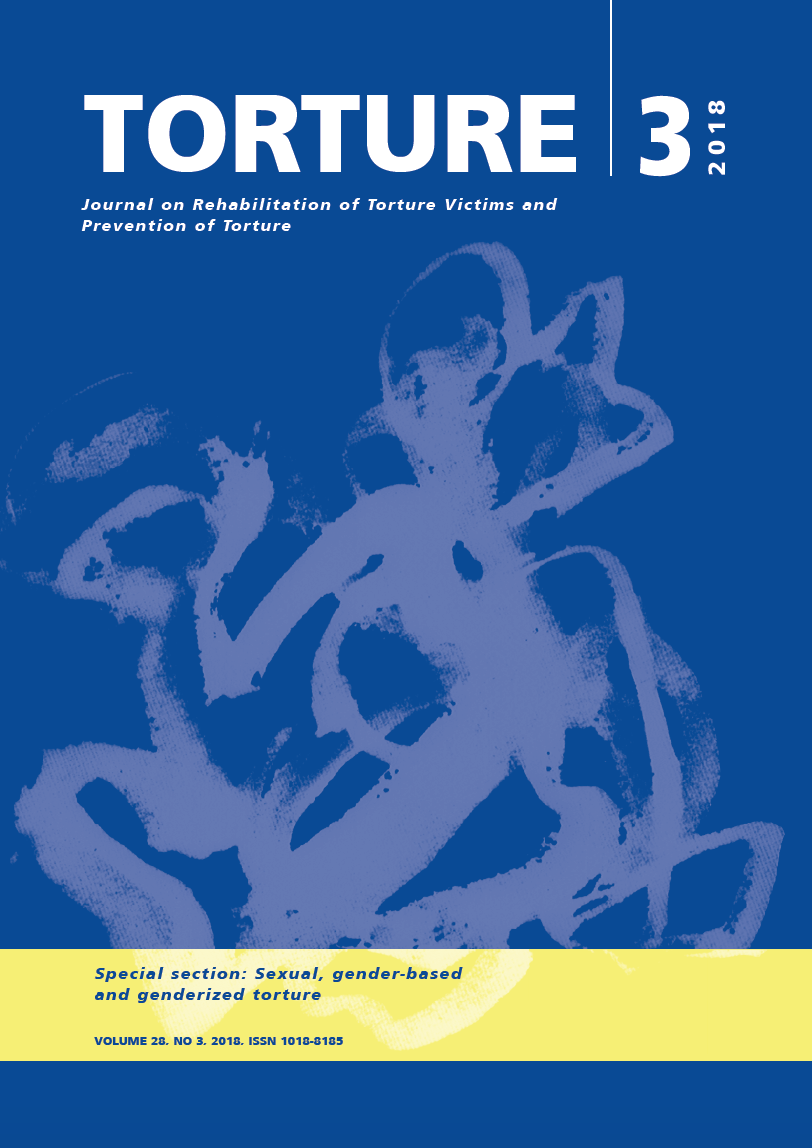From sexualized torture and gender-based torture to genderized torture: The urgent need for a conceptual evolution
DOI:
https://doi.org/10.7146/torture.v28i3.111179Abstract
Classical perspectives on sexualized torture are being increasingly challenged by contemporary debates informed by emerging claims (Mendez, 2016; Sáez, 2016; Sifris, 2014). Gender-based analysis based on feminist and other theoretical approaches is needed to adequately address these.
Arriving at a general framework for the reconceptualization of torture, and progressively widening the analytical scope of gender and torture, are priorities. Gender analyses of torture needs to encompass a broader range of phenomena, from rape and attacks on sexual integrity to any suffering inflicted on human beings that is intricately intertwined with gender (Jakobsen, 2014), including and not limited to discrimination against LGTBI persons,1 genital mutilation, and the restriction of any of the broad range of issues under the frame of reproductive freedom, such as abortion and involuntary sterilization.2
The push for a gender transformative rethinking of conceptual and analytical approaches to torture is accompanied by the need to develop specific tools to detect and assess sexual and gender-based torture (including the necessity for a reconsideration of gender perspectives on the Istanbul Protocol), to incorporate a feminist perspective in the rehabilitation of victims. This requires specific treatment approaches as well as holistic survivor-centered rehabilitation models that include access to high quality and comprehensive services. Services that support stigma reduction are particularly important.
Our own desk review on all papers published in Torture Journal since 2006 until 2018 showed a clear gender analysis gap: only 32% of papers included the word ‘gender’ and 38% the word ‘female’ in any part of the text. In 84% of the cases, these mentions simply indexed the presentation of data disaggregated by sex. Only 4% of all the papers published in the Journal attempted a gender analysis. To help address this gap, the Journal circulated a call for papers on gender and torture that aligned with research priorities identified in our Delphi study (Pérez-Sales, Witcombe, & Otero, 2017). The response to this call has been encouraging.
This issue features a collection of texts that highlight important aspects of sexualized and gender-based torture and provide reflections that contribute to framing the theoretical debate on the nature and scope of gender-based and genderized forms of torture. The Journal believes that even more research and reflection is necessary to adequately clarify and raise the terms of this debate and additional texts relevant to the topic are planned to appear in forthcoming issues. This current issue draws out key concepts that are important to making an impact, both on the debate and in practice.
Downloads
Published
How to Cite
Issue
Section
License
We accept that some authors (e.g. government employees in some countries) are unable to transfer copyright. The Creative Commons Licence Attribution-NonCommercial-NoDerivatives 4.0 International (CC BY-NC-ND 4.0) covers both the Torture Journal and the IRCT web site. The publisher will not put any limitation on the personal freedom of the author to use material contained in the paper in other works which may be published, provided that acknowledgement is made to the original place of publication.


